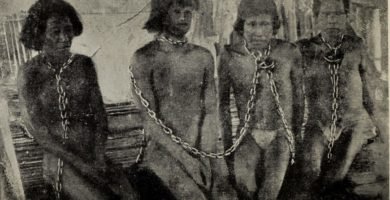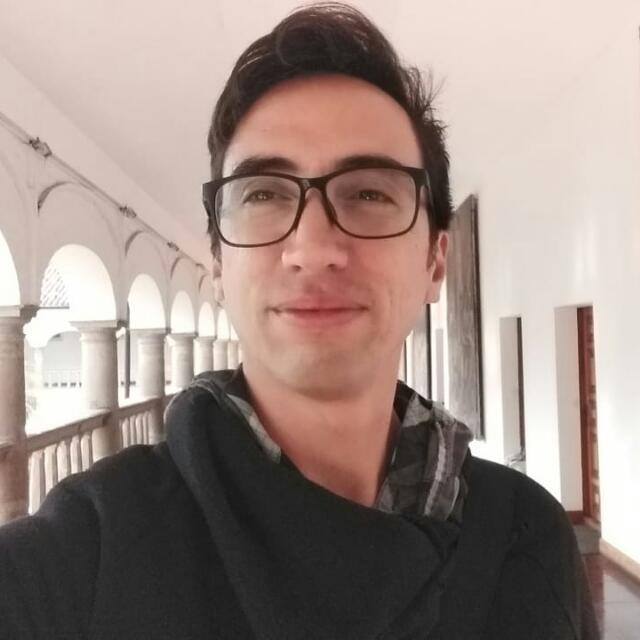
A great variety of medicinal, edible, and aphrodisiac trees grow in the Amazon forest.
On the one hand the Ceiba or Kapok (Ceiba pentandra) stands out not only because of it height (it can reach up to 70 meters) but mainly because of it mythological relevance.
And, on the other hand, the rubber tree, its exploitation and indigenous genocide, deserves a separate mention as it is a complex and sensitive issue that seriously affected the original inhabitants of the Amazon Rainforest.
Medicinal Trees
The fruit of the Algarrobo tree (Hymenea courbaril) is widely used by the indigenous people of the Amazon to fight against bronchial conditions, and its bark is used to build canoes.
The Chitato or Majagüito (Muntingia calabura) is a small tree with smooth bark and sweet, juicy, edible fruit. The fruit has a high content of minerals such as calcium, iron, phosphorus, and vitamin C. Its leaves are used to treat respiratory diseases, measles, and smallpox.
Another tree with healing properties is the Clove (Syzygium aromaticum, Eugenia caryophillus) . Clove contains eugenol which has anesthetic properties. It can be used to lessen dental pain. It is also anti-inflammatory and an antibiotic, and it helps lower blood-sugar levels.
The Chuchuhuasa (Maytenus macrocarpa, M. laevis) is a large tree that can reach up to 30 meters in height. It usually grows in the Amazon basin of Colombia, Ecuador, and Peru. The bark can be soaked or soften and added to alcohol.
It has many medicinal uses. It is used as a restorative to cure osteoarthritis and rheumatism.
Some say it is effective against tumors, and it is recommended to treat stomach cancer.
Timber trees
Charapilla (Dipteryx odorata) is a timber trees which is known in Colombia and Venezuela as the Sarrapia, Tonga or Yape. There are many such trees in the Venezuelan Amazon region.
This tree can reach up to 40 meters in height. It has very hard wood, and it has a variety of uses; however, it is widely used for flooring or to manufacture furniture such as beds. It is also used in perfume.
The genus Cumala (Virola sp.) includes several species which are tall. They have straight trunks and oily fruits from which an oil is extracted to use in lanterns.
It is usually used as timber in the regional lumber industry. Local residents use the wood to build their homes.
Another timber species is Olla de mono (Lecythis pisonis). This tree is native to the Amazon basin, and it is found in Brazil, Colombia, and Peru. It grows on high ground in well-drained soil.
It reaches a height of 40 meters, and the seeds of the Olla de mono are edible.
Its wood is very durable. It is widely used in rural construction and carpentry.
Also within this group are the Cedrela odarata, commonly known as Cedar. There are also Mahogany, Rosewood, and Oak .Indiscriminate logging, deforestation, and fires caused by extensive livestock farming and illicit crops threaten the habitat of many of these species. They also threaten conservation efforts.
Aphrodisiac trees
Cumaceba (Swartzia polyphylla) is a hard wood used to make spears and arrows. Its bark is soaked or softened in alcohol to prepare a drink that is considered both an aphrodisiac and an anti-rheumatic.
Many people combine Cumaceba with the bark of other trees such as Chuchuhuasa to enhance its aphrodisiac properties.
Another tree that has invigorating and aphrodisiac properties is the Huacapú (Minquartia guianensis). Its roots are used to prepare a liquor known as 21 Roots.The Isula Huayo (Siparuna guianensis) is a shrub that bears fruit. Inhabitants of the region user the ripe fruit as an effective digestive or for its aphrodisiac properties.
Fruit and food trees
People of the Amazon eat many of the fruits that grow on the trees. Some fruit is eaten in its original state while others are use as ingredients for typical culinary preparations of the region.
The Charichuelo (Garcinia macrophyllia) bears fruit with a green shell, white pulp, and acidic taste. The fruit is eaten raw or used in typical drinks, juices, ice creams, and jams.
In the Amazon jungle, the Chigo or Guamo Chigo (Campsiandra comosa) grows on the banks of rivers. It has some seeds that are ground into a brown flour called chiga. The flour is used to prepare typical dishes such as arepas, atoles, or mazamorras.
Another tree with edible fruit is the large and leafy Chopé (Gustavia longiflora). This tree has small brown fruit that have pleasant flavor when ripe.The Cherry of the Amazon is a sweet fruit that comes from the Yumanasa tree (Muntingia calabura). The fruit from the Uvilla or Uva de Monte (Pourouma cecropiaefolia, P. multifida), is eaten raw or used in different foods and drinks such as uvachado.
Ceiba: the giant of the Amazon
The Ceiba pentandra , also known as Kapok, is an ancient tree that can reach up to 70 meters in height. Its trunk can reach more than 3 meters in diameter, and it has tabular roots.
It is a fast-growing tree that grows in the Amazon basin in the lowlands of the flooded savannahs or varzea.
Due to the high commercial value of its wood, it is considered a threatened species.
It is ironic because the loggers do not recognize that the true treasure of the ceiba, or cotton tree, is not its wood—but its fruit. The fruit produce a non-allergenic organic cotton-like fabric referred to as silk cotton. It is usually woven into pillows, blankets, and clothes.
There are many stories and legends surrounding this tree. It is said that at night it is frequented by evil sorcerers, goblins, and giant animals.
The tribes of the Amazon jungle believe that at the base of the ceiba tree there is a great door invisible to human eyes. It gives people on Earth a means to communicate with the Amazonian spiritual world.
Others talk about the voice of the tree which seems to roar when the wind enters the trunk cavities.
The rubber tree
The rubber tree ( Hevia brasiliensis ) deserves a special mention because its exploitation during the first half of the 20th century brought large trading houses and considerable profits. The result was misery, barbarism, slavery, torture, and indigenous genocide.
November 25, 2019

Rubber tree – A genocide undercover behind a big business
Author

Daniel Osorio holds a BA in Social Communication with a mention in Communication for Humanistic Development (Universidad de Los Andes, 2005). Film and TV director and screenwriter. Specialist in Digital Marketing (SEO, SEM, Adwords, Adsense). General Manager (CEO) at DMT Agency. He is the founding editor of the portal delamazonas.com among others.
Proofreader
This post is also available in:
![]() Español (Spanish)
Español (Spanish)
